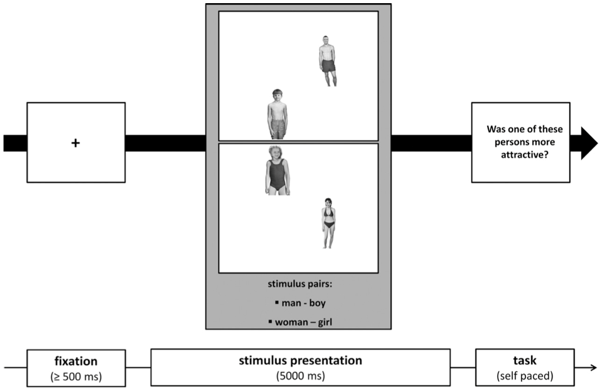Pedophilia
1/23
There's no tags or description
Looks like no tags are added yet.
Name | Mastery | Learn | Test | Matching | Spaced |
|---|
No study sessions yet.
24 Terms
Diagnostic criteria in the DSM-V
Recurrent, intense sexually arousing fantasies, urges or behaviours involving a prepubescent child or children (usually < 13) present for > 6 months
Has acted on these urges or is distressed/impaired by them
Person is > 16 and > 5 years older than the child
Excludes an older adolescent in an ongoing relationship with a 12/13 year old
Eher et al. (2019) - child sex offenders and pedophilia
67% have a pedophilic disorder
14% interested in children exclusively
Dombert et al. (2016) - survey of 8718 men
3.2% show sexual offences for children with only 0.6% showing sexual preference for children
50% of those with preference for children have thought about help seeking
Non-forensic ways of diagnosing pedophilia
Sexual history questionnaire (Cohen et al, 2010)
Minor attracted persons questionnaire (Cohen et al, 2018)`
Forensic ways of diagnosing pedophilia
Forensic records
Penile-plethysmography
Eye movements
Fromberger et al. (2012) - eye movement tests
Question not used to judge pedophilia, used to keep focus between eye movement

McPhail and Olver (2020) - meta analysis of treatment for pedophilia
Measured using penile plethysmography
Effect size 0.6 for behavioural treatment
Effect size 0.65 for pharmacological treatment
Limitations of penile plethysmography
May measure a change in a person’s ability to monitor and manage their arousal
Gannon et al. (2019) - meta analysis of sexual offence programmes
9.5% sexual recidivism in treated group
14% sexual recidivism in untreated group
Emotional deficit risk factors for pedophilia
Self esteem deficit
Loneliness
Hostility towards women
Emotion oriented coping
Emotional congruence
Offence supporting attitude risk factors
Emotional victim empathy deficits
Cognitive victim empathy deficits
CSA supporting attitudes
Sexual self regulation deficit risk factors
Coping self-efficacy skills
Sexualised coping
Sexual preoccupation
Prevention project dunkelfeld
Provides free confidential treatment with a combo of psychotherapy and pharmacotherapy for individuals with pedophilic disorder
Therapy in project dunkelfeld
Strengthening motivation and ability to control behaviour and lowering risk factors for child sexual abuse and consumption of child pornography
Development of social and cognitive capacities to live without sexual offences
Timeframe of project dunkelfeld
1-2 years course
Flexible time frame
Weekly group and individual sessions
Reier et al. (2024) - child sexual abuse reduction in project dunkelfeld
Reduced from 46.4% pre treatment to 7.7% at follow up
Reier et al. (2024) - child pornography reduction in project dunkelfeld
46% consumption pre treatment reduced to 35% post treatment, but only 42% at follow up
45% reduction in the severity of material consumed
Reier et al. (2024) - psychological outcomes in project dunkelfeld
Empathy deficits 76.6% pre, 66.2% post and 67% at follow up
Child sexual abuse supporting attitudes 68.3% pre, 64.7% post and 67% at follow up
Alanko et al. (2013) - genetics and pedophilia
3% of sample showed sexual interest in children
Non-additive genetic factors explained 14.6% of variance
Jahn et al. (2022) - serotonin
Epigenetic alternations of the serotonergic system may contribute to pedophilia and child sexual offences
Neuroimaging in pedophilia
No neuroanatomical alterations in idiopathic pedophilia
Lesions in right inferior temporal gyrus and bilateral OFC in acquired pedophilia
Abused abuser hypothesis
Pedophiles abuse children because they are victims of abuse
Alanko et al. (2017) - abuse among 8944 men
4.7% reported childhood sexual abuse
37.9% of the group reported sexual offending against children
24.6% reported child pornography offences